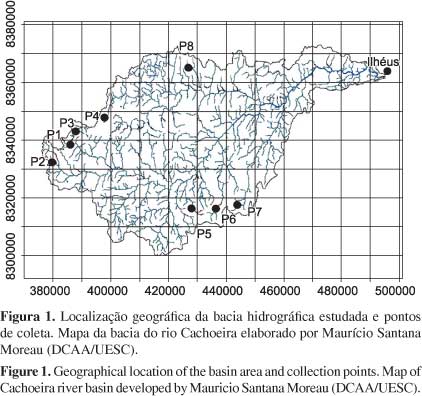The aim of this study was to investigate specific characteristics and common features related to the abundance and the gradient of environmental conditions and food resources used by Trichomycterus bahianus and Characidium aff. zebra. These species are two typical streams fishes collected during the rainy season using electric fishing equipment in eight sites at the headwaters of the Cachoeira river basin, in a region of Atlantic rainforest in southeast of Bahia State. We quantified the correlation between environmental data and abundance through a principal component analysis. It was obtained the diet amplitude, the niche overlap and tested the differences in exploitation of food resources. In addition, we tested the differences in composition and degree of food preference in different stages of development. We collected 55 specimens of C. zebra and 124 of T. bahianus. It was found that the abundance of the two species is related to the gradient grass-rock on the shore and sand-boulder at the bottom. We can say that regardless of species, females were larger and heavier than males (p < 0.001). The sex ratio of C. zebra differ from the expected (Χ2 = 4.091, df = 1, p = 0.043). The two species were classified as invertivorous, consuming mostly immature aquatic insects. There was no significant difference in the number of items consumed by the species, and the diet overlap was high (Oj,k = 0.895). However, the species showed different strategies to obtain food which lead to significant differences in exploitation of food resources (p < 0.001). This was evidenced when we took into account the different stages of development, showing that the diet of C. zebra is more generalist than T. bahianus. Probably, the sharing of abundant resources and differences in the occupation of microhabitats and life strategies allows the coexistence of this two species in the streams of the Cachoeira river basin during the rainy season.
environmental conditions; diet; Atlantic rainforest; stage of development; Characidium zebra; Trichomycterus bahianus










